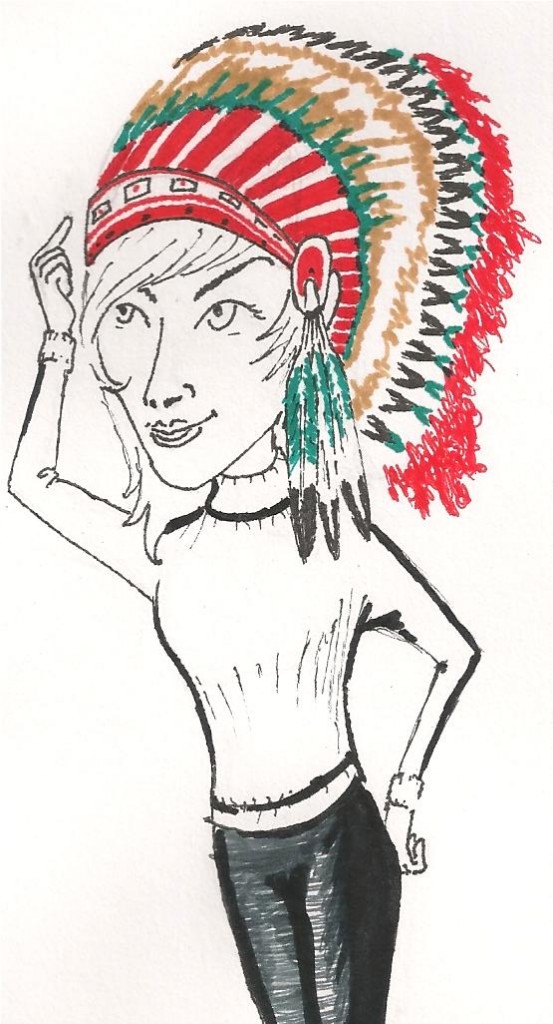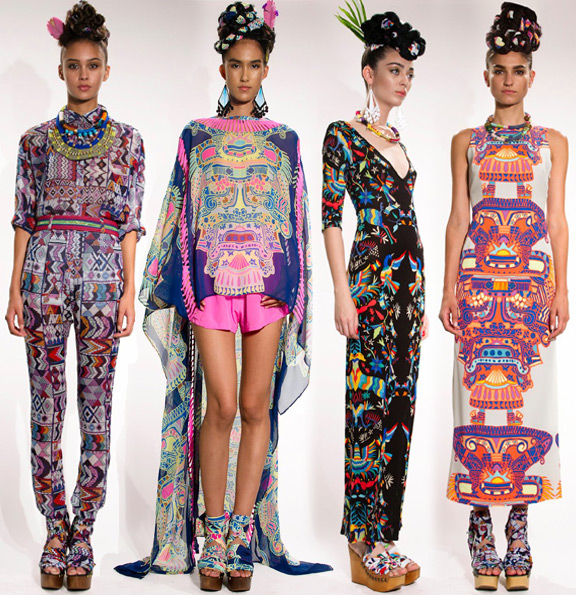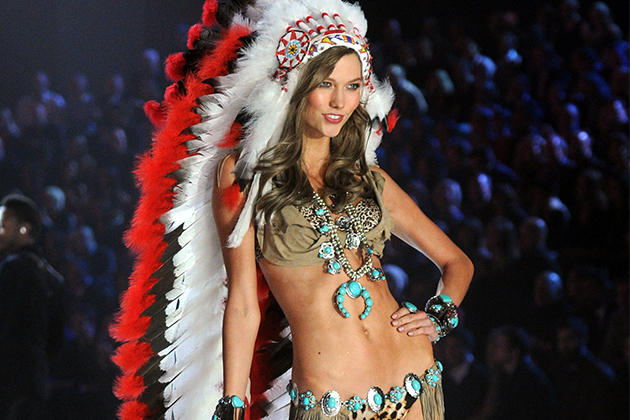Lucy Mulvaney | Contributing Writer
On the 4th of December 2012, Karlie Kloss swept down the Victoria Secrets runway, engulfed in a flurry of crimson feathers cascading from the sacred symbol of power and courage that was perched upon her freshly curled auburn locks.
A Native American headdress is a sacred icon of spirituality, treasured by the tribes of North America. It dates from thousands of years before Joseph LaMoth decided to put pen to paper and design lady’s knickers. How then, can such a blatant display of cultural appropriation be permitted in the hallowed halls of Bryant Park during fashion week? How can shops such as Urban Outfitters, Paul Frank and Abercrombie & Fitch present ancient cultures as mere commodities, to be wrapped up and sold to gaggles of white middle class trend-starved hipsters? The tragic answer is: it’s “hip” to do so.

From Nicholas K to Topshop, buyers have been flashing the plastic with reckless abandon in response to the long-standing “native” trend. However to call mass produced clothing “Native” or “tribal” greatly depreciates the culture of whichever group the clothing was inspired by. Therefore, what the fashion industry conveys is “it doesn’t matter which native or tribal group this tacky tee was inspired by, it’s just not Caucasian inspired”. The 500 + tribes of North America, each boasting their own unique history, culture, language and traditions have therefore been compressed into one mangled stereotype: the buckskin- clad, tomahawk wielding, feather-headdress-wearing Indian.
The most common argument in favour of cultural appropriation would be that of the “who cares” variety. Who cares if a drunken hipster gets Pocahontas tattooed on his chest? Who cares if Selena Gomez chooses to prance around in traditional Hindu attire?
You cannot play dress-up with the reality of other people’s lives or what they consider sacred
My response to this is simple; cultural appropriation cannot be divorced from the prevalent issues of institutional racism and discrimination. In the context of fashion, it is still a white dominated industry benefiting from picking and choosing from different cultures to then make fashionable for white middle class buyers. Sub-cultures of class or race, nationality or religion should not just be something white people can try on as a novelty. You cannot play dress-up with the reality of other people’s lives or what they consider sacred.

Before you consider wearing an item of someone else’s culture ask yourself first, ‘If I saw the original wearer of this fashion wearing it would I acknowledge that it is not just made fashionable and thus acceptable when a white middle class woman wears it?’ The second question is ‘Am I sure that I am not merely appropriating a stereotype of a culture I know little about ?’ Very rarely in recent fashions has the answer to these questions been yes.
An entire culture should never be reduced to mere “inspiration” for fashion. Perhaps when people can answer yes to these questions and choose to recognize indigenous populations as complex, intelligent, diverse people, there will be an end to the reductive stereotypes cluttering the fashion, film and music worlds. But until then the cultural appropriation in fashion is largely a reductive and disrespectful exploitation of symbols of great import to other cultures.







